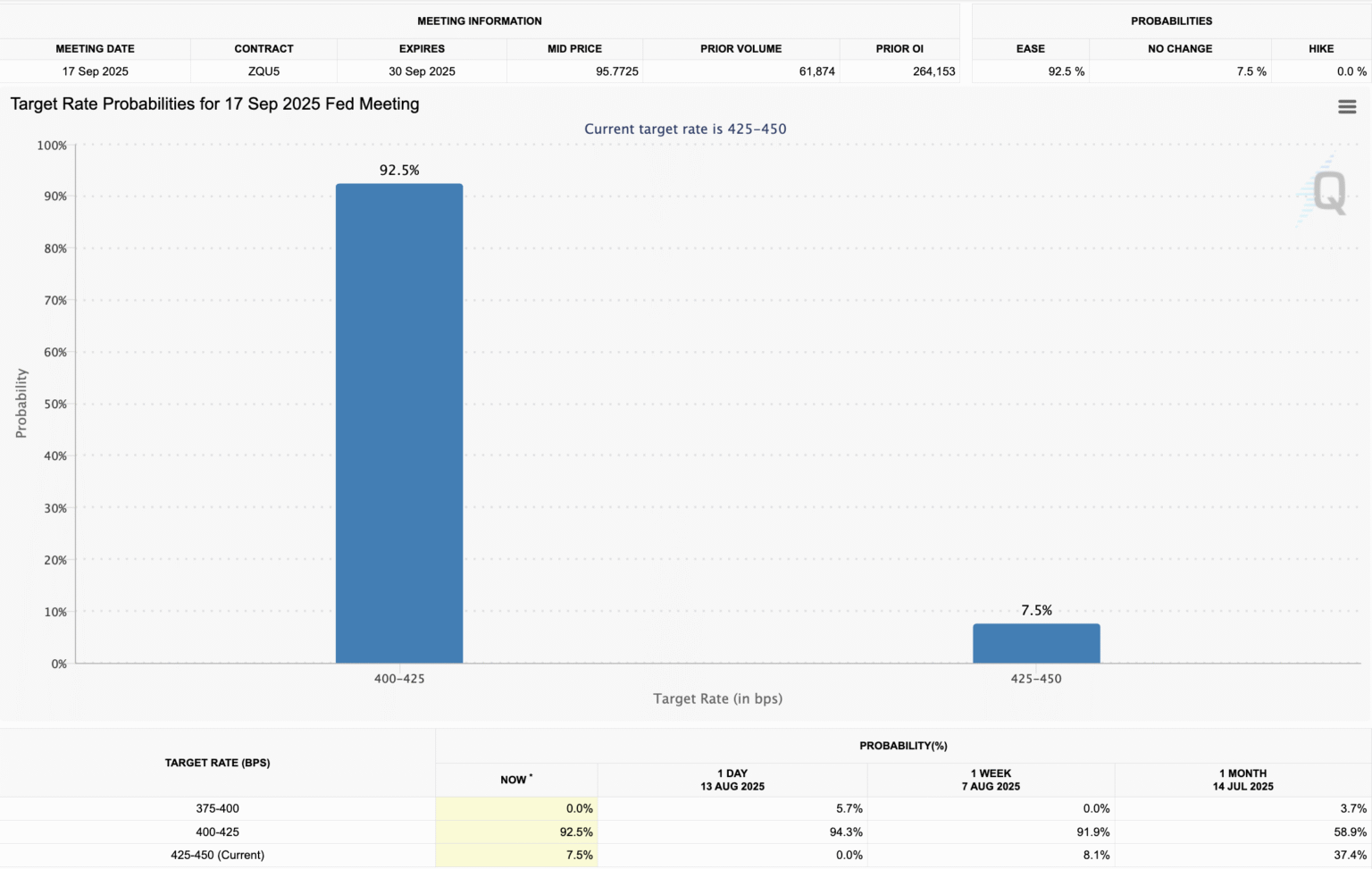Bitcoin and Ethereum React to Inflation Data: Market Overview
In recent market developments, Bitcoin has experienced a decline of over 2%, while Ethereum’s native token also faced slight dips. This downturn follows the release of inflation data indicating that U.S. producer prices rose sharply in July, exceeding economists’ expectations. The Producer Price Index (PPI) reported a month-over-month increase of 0.9% and a year-over-year rise of 3.3%, marking the fastest annual pace since February. Such inflation figures have reignited macroeconomic concerns and triggered significant liquidations across the cryptocurrency markets.
The unexpected PPI increase has put pressure on market sentiment, as it suggests potential complications for the Federal Reserve’s plans regarding interest rate adjustments. Investors were already anticipating a potential dovish pivot, with futures indicating a 92% chance of a rate cut in September. This figure, although slightly decreased from earlier predictions, reflects a broader market belief that the PPI surge may be an outlier unless further data confirms inflationary trends. In the span of just 24 hours, CoinGlass reported over $1 billion in liquidations, highlighting how sensitive the market is to economic signals.
Among the liquidated positions, approximately $782 million came from long positions, with the most notable forfeiture being a $6.25 million ETH/USDT position on the Bybit exchange. Such a wave of liquidations illustrates the volatility that has gripped the crypto market. The rapid shifts in sentiment and positioning underscore how intertwined cryptocurrency prices are with traditional economic indicators, compelling investors to reassess risk and adjust their strategies.
Analysts indicate that the derivatives market continues to be a pivotal factor in current market dynamics. Open interest across altcoins has surged to an all-time high of $47 billion, indicating a substantial buildup of leverage. This high level of leverage can lead to amplified price swings, as evidenced in recent trading activity. Given the mixed signals from inflation data, many experts are predicting heightened volatility as the market reacts to forthcoming jobs data and the results of the most recent Federal Open Market Committee meeting.
The recent PPI figures have emerged just days after a more favorable consumer price report helped foster a risk-on sentiment among traders. With contradictory inflation signals complicating the economic landscape, the outlook for the crypto market remains precarious. Traders and investors are advised to stay alert as the market navigates this duality, grappling with concerns about inflation while awaiting definitive statements from Federal Reserve officials.
In summary, the cryptocurrency market is currently in a state of flux, dramatically influenced by economic indicators such as the Producer Price Index. While Bitcoin and Ethereum experienced notable declines in response to increased inflation worries, the broader market remains hopeful for a potential interest rate cut in September. Investors should consider the implications of a highly leveraged derivatives market and prepare for the potential volatility stemming from upcoming economic reports. As the landscape shifts, informed and strategic decision-making will be essential for navigating the complexities of today’s cryptocurrency environment.


